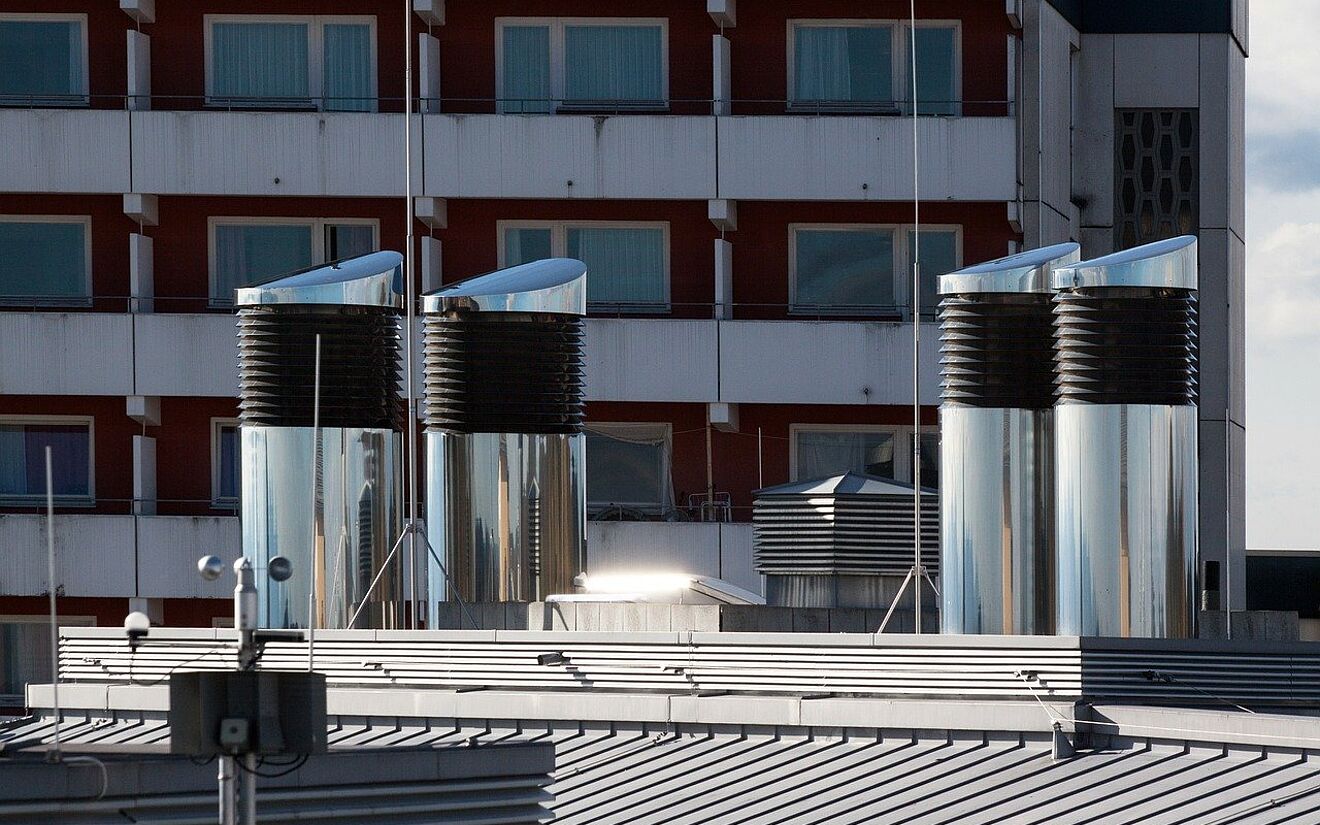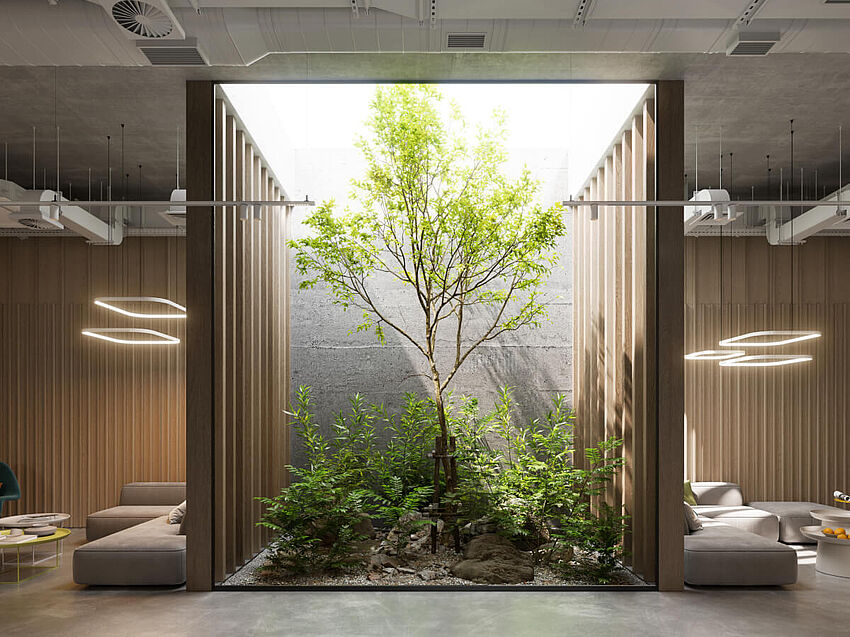In the context of sustainable building, researchers are not only developing new types of materials, but also innovative systems that utilize energy more efficiently. One of these is component activation. In this article, you will learn what the term means, how the technology works and what advantages and disadvantages it offers for architects and engineers.
Using components to control the room temperature
Thermal component activation uses building masses to regulate temperature. That is why it also utilizes the name concrete core temperature control (CCTC). The walls, ceilings or floors are built with water-carrying pipes that serve to heat and cool the premises of a building. The assembly can either occur manually, which means the pipes are affixed on a supporting mat, or prefabricated pipe modules are used, which accelerates the construction progress significantly.
Heating and cooling with a low energy difference
The adjustment of the room temperature is based on a self-regulating effect. The temperature difference between the component surface and the room itself is crucial. If the temperature of the component is below that of the room, the system has a cooling effect. In the opposite case, it heats up the room. The heating or cooling water changes between 18 and 22°C or maximum 27 to 29°C. The room temperature varies between 21°C and 25°C.
In the summer, the system uses the ambient energy directly,such as the free re-cooling, groundwater cooling or base slab cooling. However, an additional power supply is required to distribute the cooling energy. In the winter, for example, a heat pump provides the necessary energy to achieve the desired room temperature.
Advantages of the innovative heating and cooling system
This technology is particularly suitable for use in sustainable architecture, because it not only reduces the required primary energy quantity to regulate the temperature in buildings. It is also very well-suited in combination with renewable energy sources, such as geothermal energy. Due to the larger transmission areas compared to traditional heating elements, small temperature differences are enough for the heating and cooling system to perform significantly.
Disadvantages of component activation
The system reacts with a time delay, which means that the energy generation occurs at a different than the energy output. In the summer, for example, the room cools down overnight and thus cools the water in the pipe system. During the day, the heat from the room penetrates into the component and the technology lowers the room temperature. Thus individual and faster temperature adjustments are not possible. When planning a building, this means providing for predictive heat and cold load management. For example, factors such as the room use and solar radiation must be taken into consideration.
Concrete core temperature control in new building
Component activation is especially used in the new building of office buildings. Architecture, building physics and building technology must be closely coordinated with each other so that this system can be used as the sole system to heat and cool a structure. For example, the concrete construction is the basis for this technology. Concrete covers may not be suspended or covered, as otherwise the heating or cooling performance is decreased. The building envelope also affects the energy management of the facility.
During planning, architects divide the building into zones, which vary by orientation, story, use or facade design. Using a thermal building and system simulation, the CCTC systems can be arranged as best as possible. The pipes are installed as part of the formwork, reinforcement and concreting work either in a spiraling or meandering form.
The technology of component activation requires careful planning
Concrete core temperature control is versatile in use and works best in combination as a cooling and heating system. The primary energy consumption is greatly reduced due to the self-regulating effect and the use of renewable energies. In order to further improve the performance of these systems, however, the hydraulic systems as well as the control strategy must be planned carefully.




